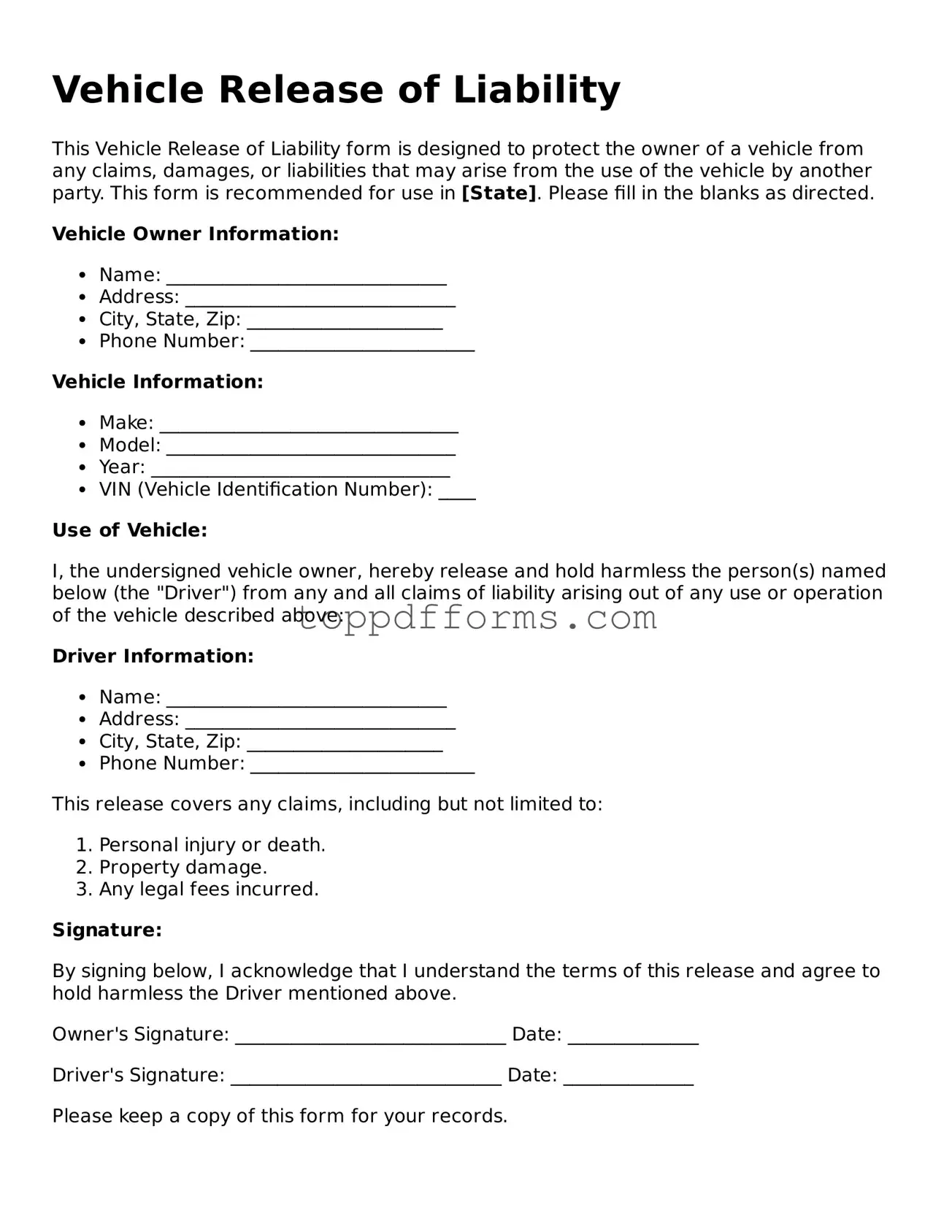What is a Vehicle Release of Liability form?
A Vehicle Release of Liability form is a document that protects a vehicle owner from legal claims after they have sold or transferred their vehicle. By signing this form, the buyer acknowledges that they assume all responsibility for the vehicle once the transaction is complete. This helps ensure that the seller is not held liable for any accidents, damages, or legal issues that may arise after the sale.
Why should I use a Vehicle Release of Liability form?
Using a Vehicle Release of Liability form is important for both parties involved in a vehicle sale. For the seller, it provides peace of mind, knowing they are not responsible for any future incidents related to the vehicle. For the buyer, it confirms their acceptance of the vehicle and its condition at the time of sale. This form can prevent misunderstandings and disputes down the line, making it a smart choice for anyone involved in a vehicle transaction.
How do I fill out a Vehicle Release of Liability form?
Filling out a Vehicle Release of Liability form is straightforward. First, include the names and addresses of both the seller and the buyer. Next, provide details about the vehicle, such as the make, model, year, and Vehicle Identification Number (VIN). Finally, both parties should sign and date the form to make it official. It’s a good idea to keep a copy for your records after it’s completed.
Do I need to have the Vehicle Release of Liability form notarized?
In most cases, notarization is not required for a Vehicle Release of Liability form. However, some states or specific situations may have different requirements. It’s always best to check your local laws to ensure compliance. If you want an extra layer of verification, getting the form notarized can provide additional assurance for both parties.
Where should I keep the Vehicle Release of Liability form once it’s completed?
After completing the Vehicle Release of Liability form, both the seller and the buyer should keep a copy for their records. This ensures that both parties have proof of the transaction and the terms agreed upon. Store it in a safe place, such as a file cabinet or a digital folder, where you can easily access it if needed in the future.
